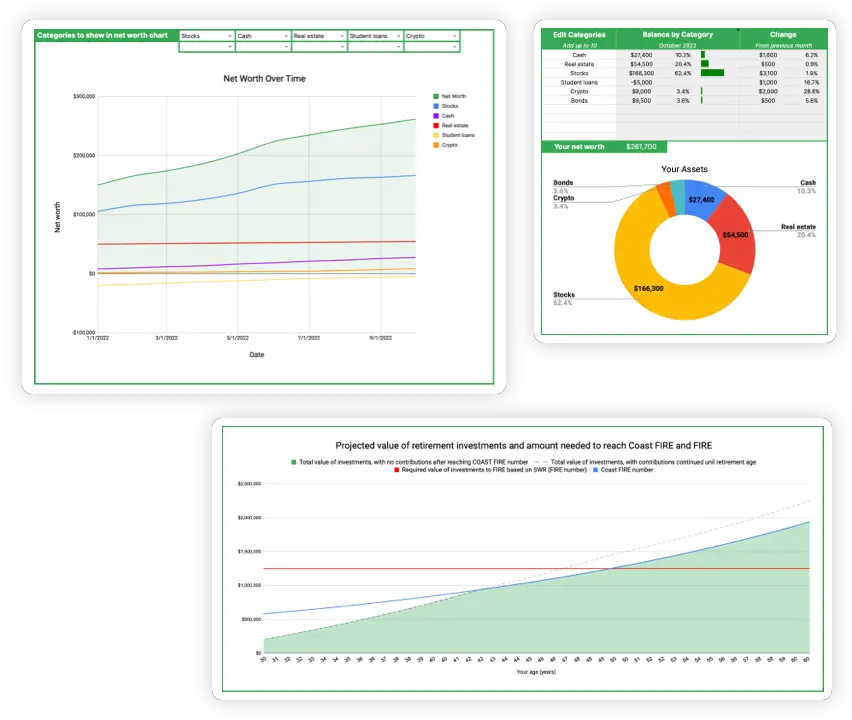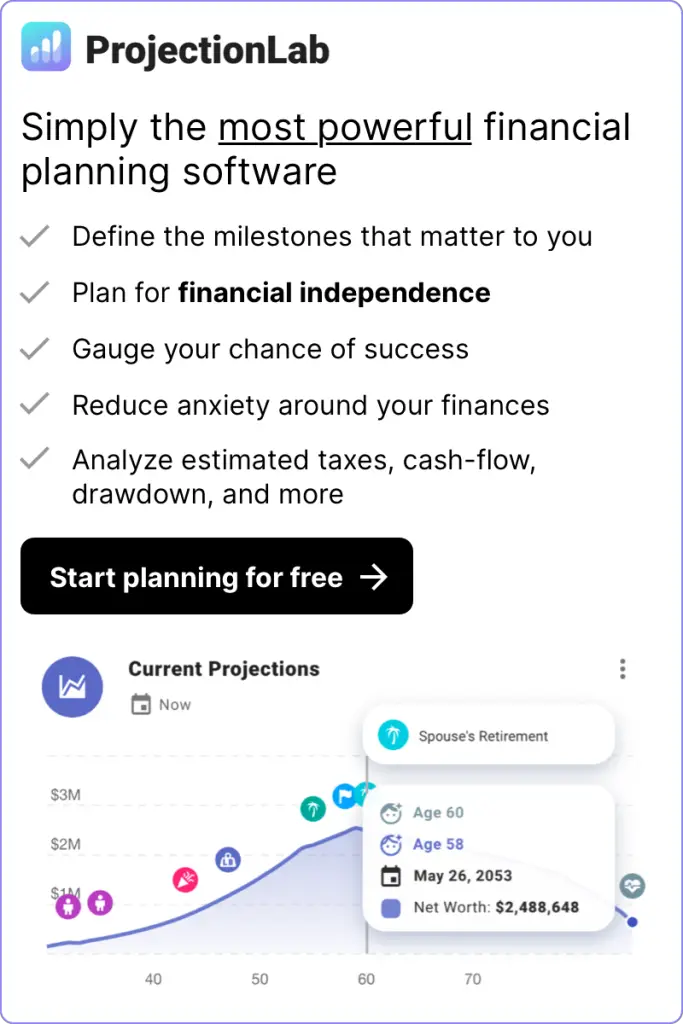Quickly calculate the cap (capitalization) rate for a real estate investment
Take your wealth planning to the next level with my Wealth Planning Toolkit for Google Sheets – just $20.
Plan for recurring monthly income over different time periods as well as windfalls and one-time purchases in the future.
Includes 10 year Net Worth Tracker with Dashboard, Asset Rebalancing Calculator, and advanced FIRE and Coast FIRE Calculators.

Summary
- The capitalization rate, or cap rate, is a key financial meric used to compare the level of risk and rate of return of a real estate deal.
- Cap rate is calculated by taking the net operating income (NOI) divided by the market value of the property.
- Knowing the cap rate helps you understand how long it will take to recoup your initial investment in a real estate deal.
- This calculator allows you to quickly and easily enter the details of your real estate deal to determine the cap rate which you can use to compare properties.
What is Cap rate?
The capitalization rate, or cap rate for short, is a common financial metric used by real estate investors to evaluate and compare real estate deals based on their desired level of risk and reward.
It is important to note that the cap rate does not provide a total return on investment for a real estate deal, but rather it tells you how long it will take to recoup your initial investment in the deal.
There are several factors that impact the cap rate of a given property. The key factors include:
- Location. Location is a critical component when it comes to real estate valuation. A risker location will often accompany a higher cap rate, whereas a more desirable location will typically mean a lower cap rate.
- Property type. Cap rates vary depending on the type of property, such as single family, multi-family, industrial, office, and retail. Multi-family and industrial buildings tend to have the lowest cap rates.
- Rent growth. Being in a growing market with rising rents will likely result in a lower cap rate, while an area that is not experiencing growth likely has a higher cap rate.
How to calculate Cap rate?
The formula for calculating cap rate is:
Cap rate = Net operating income (NOI) / market value of the property
And the formula for calculating NOI is:
NOI = (sum of the property’s incomes) – (sum of the property’s operating expenses)
When calculating NOI, the operating expenses should not include principle and interest payments on a loan or capital expenditures.
You can use this calculator to enter the details of your real estate deal and quickly determine the cap rate.
Cap rate example with this calculator
To illustrate how to calculate cap rate, let’s look at an example duplex with a market value of $400,000.
We will make the following assumptions to calculate the cap rate:
- Each side rents for $1,800 per month.
- The property management fee is 10% of the rental income, and the vacancy rate is 8% (1 month per year).
- Property taxes are $4,000 per year (1% property tax rate).
- Insurance is $1,500 per year.
- Maintenance is $4,000 per year (1% of the property value).
After entering these inputs into the calculator, we can see that the property’s cap rate is 6.48%, and yields an annual net operating income of $25,924.
Why does it matter?
Knowing the property’s cap rate helps you to estimate how long it will take to recoup your initial investment into the property and it also indicates the level of risk and return involved with this property.
In general, cap rates are correlated with risk, so typically the higher the cap rate, the more risk you are taking on by investing in the property. At the same time, a higher cap rate also indicates a higher potential return.
Cap rates are most commonly used to measure the risk involved in commercial real estate deals.
Cap rate vs cash-on-cash return
The capitalization rate is similar to the cash-on-cash return metric, however they are not exactly the same.
If a property is purchased in cash with no financing, then the cash-on-cash return is the same as the cap rate.
The difference between the two metrics becomes apparent when you evaluate a property purchased with long-term debt. The capitalization (cap) rate is independent of financing, while the cash-on-cash (CoC) return does take into account the cost of long-term debt used to finance a property purchase.
Depending on the interest rate used to finance the investment, a property’s cap rate may be higher or lower than it’s cash-on-cash return.
Since the cap rate is independent of interest rates, this metric is useful because it allows investors to compare the yield of real estate investmentd across time periods with different prevailing different interest rates.
Calculator inputs
Income inputs
Monthly rent is the total value of rent that is collected from your tenants each month. This does not include property management fees.
Vacancy rate is the percentage of time when your property is unoccupied and you are not collecting rent from a tenant. One month of vacancy per year implies a vacancy rate of 8%.
Property Management fee. If you do not manage the rental yourself, you will need to hire a property manager to do so. Property managers typically charge 10% of the monthly rent as a fee.
Yearly expense inputs
Property taxes are based on the assessed value of your property and vary by state, county, and locality that the property is located in. State property tax rates as a percentage of property value range from 0.28% in Hawaii to 2.49% in New Jersey.
Landlord insurance protects your property against damage and also provides personal liability coverage. It protects your property against damage from natural disasters like storms, lightning, and hail as well as fire damage and damage from tenants. Generally landlord insurance costs about 15% more than homeowner insurance. Landlord insurance varies by geographic region as well as size, value, and age of your property. The national average for landlord insurance is $1,288 per year.
You will need to budget for Homeowner’s Association (HOA) fees if your property is in an HOA. HOA fees are standard for condos, apartments, and single-family homes in planned communities and are used to pay for amenities, property maintenance and repairs. These fees will vary by property and location but typically range between $200 and $300 per month.
Budgeting for maintenance of your property is important to keep it in good condition and to be prepared for unexpected repairs that may come up. Neglected maintenance can often cause bigger, more expensive problems down the line, so being proactive with maintenance will save you money and headaches over the long term. A common rule of thumb is the 1% of property value formula, which says that you should budget for 1% of your property’s value to be spent each year on maintenance. Factors like age and condition of your property will influence the amount of maintenance required.
Other expenses is a bucket for any other miscellaneous expenses that you anticipate. This could include utilities like water, sewer, gas, or trash collection or things like landscaping or snow removal.

